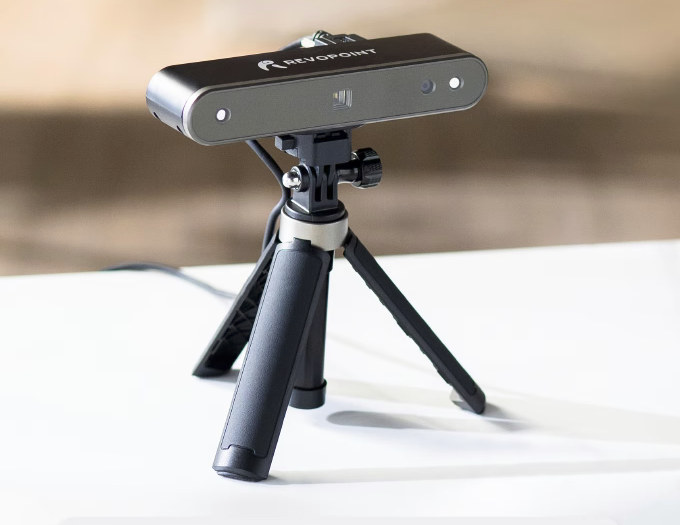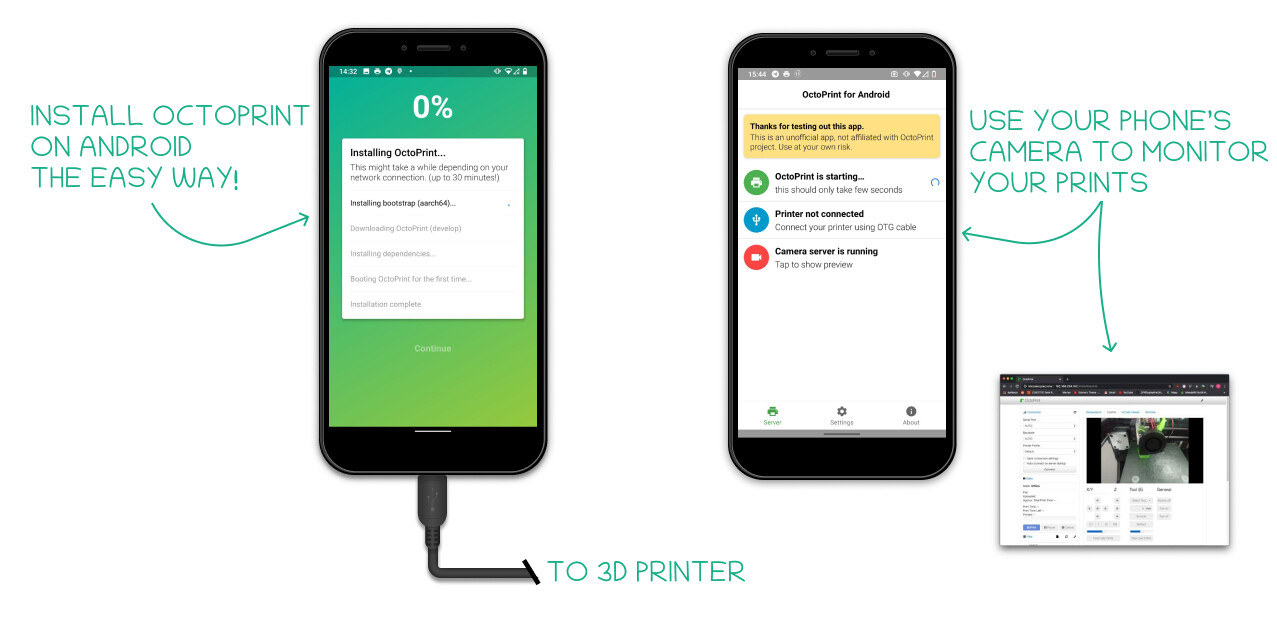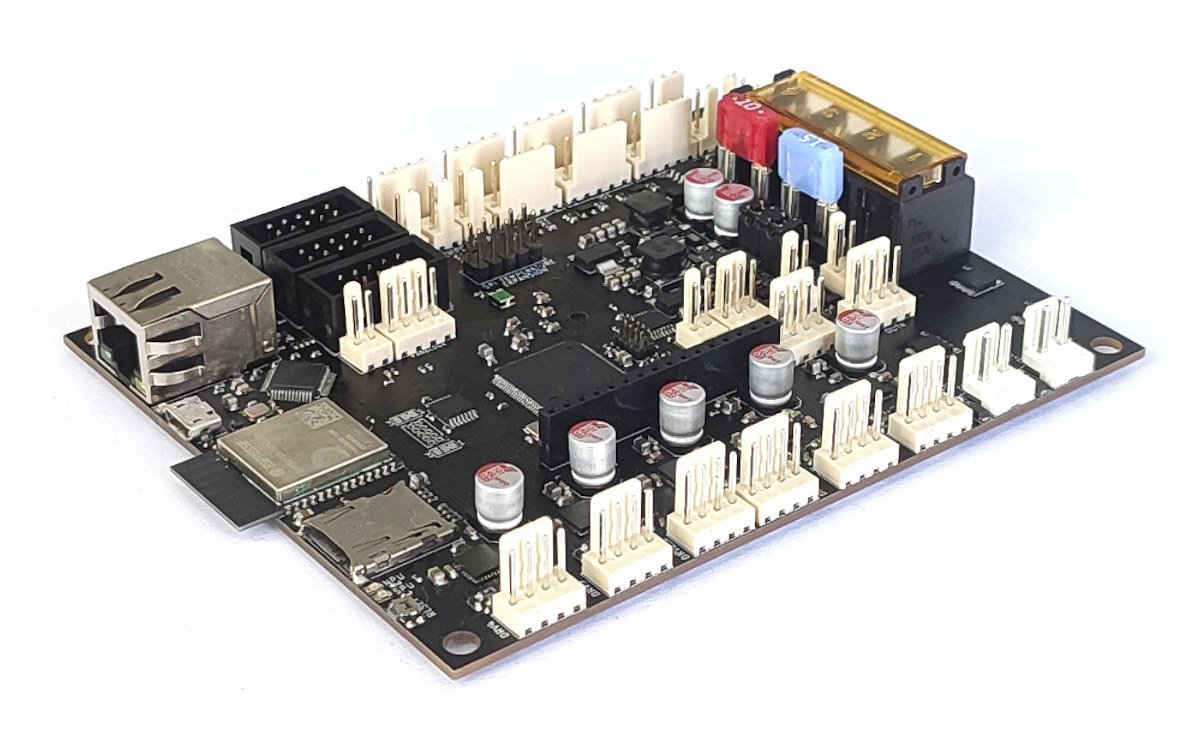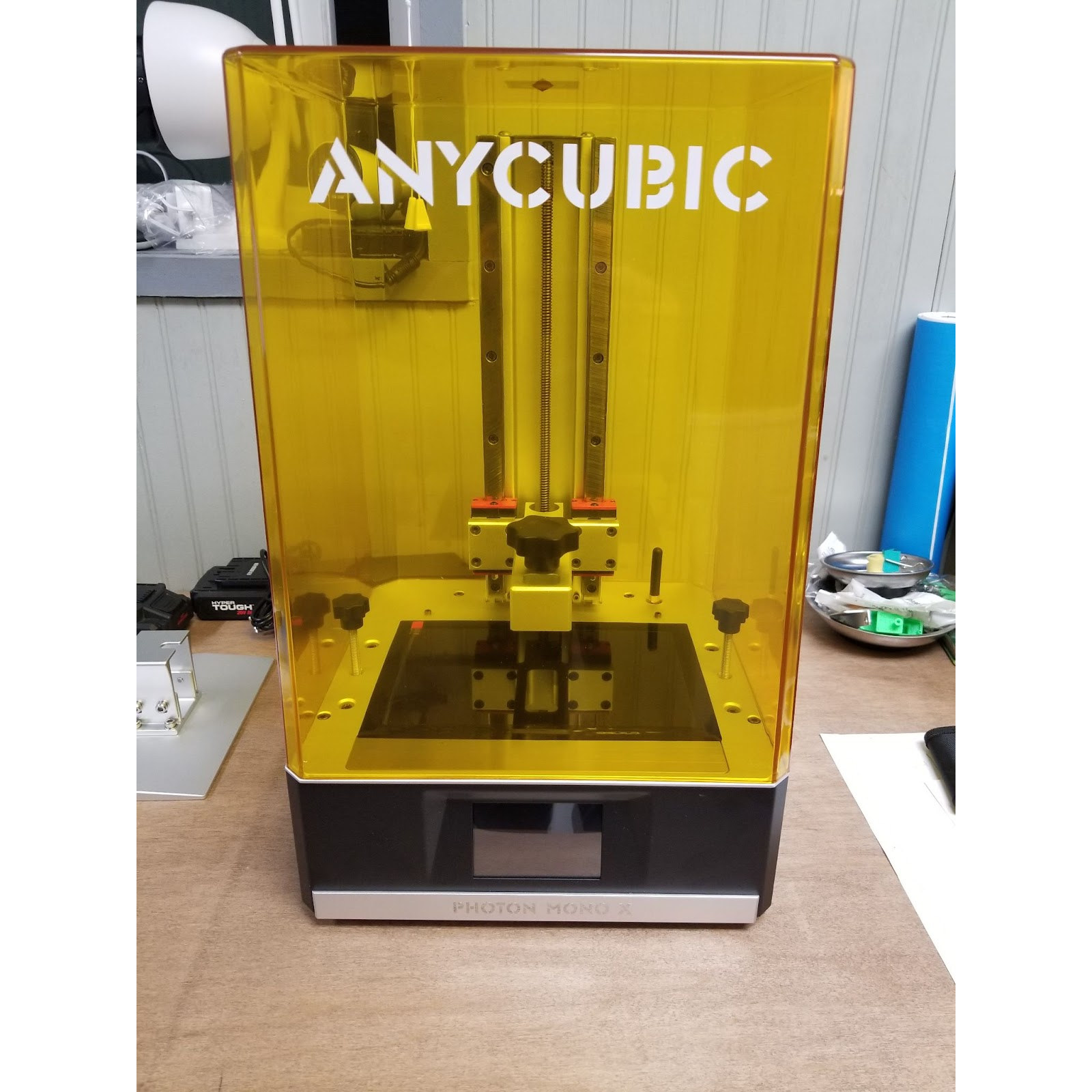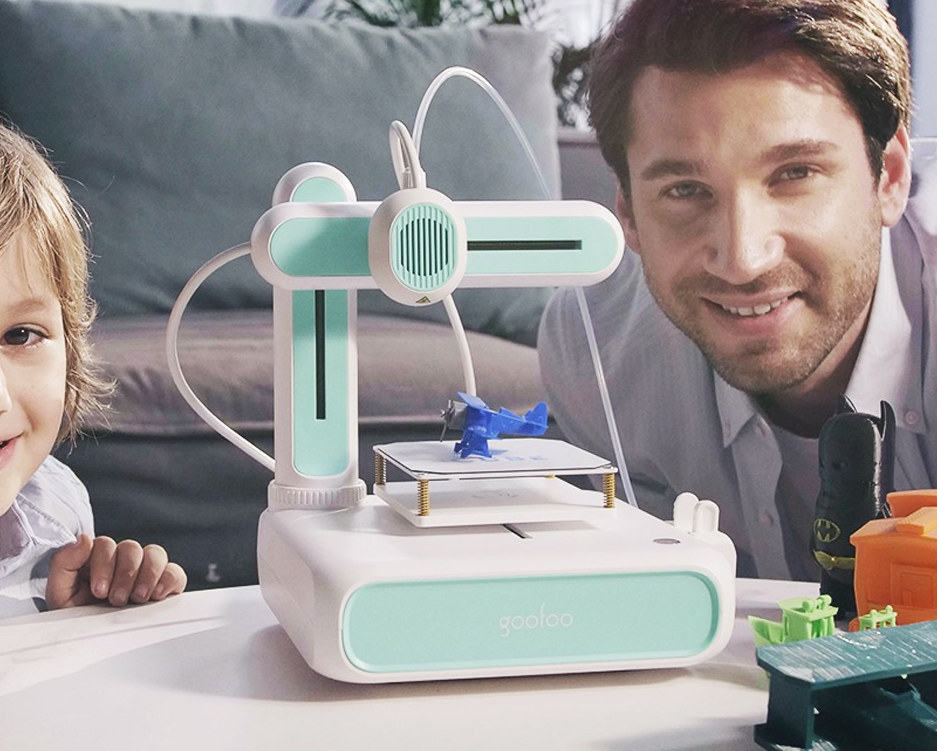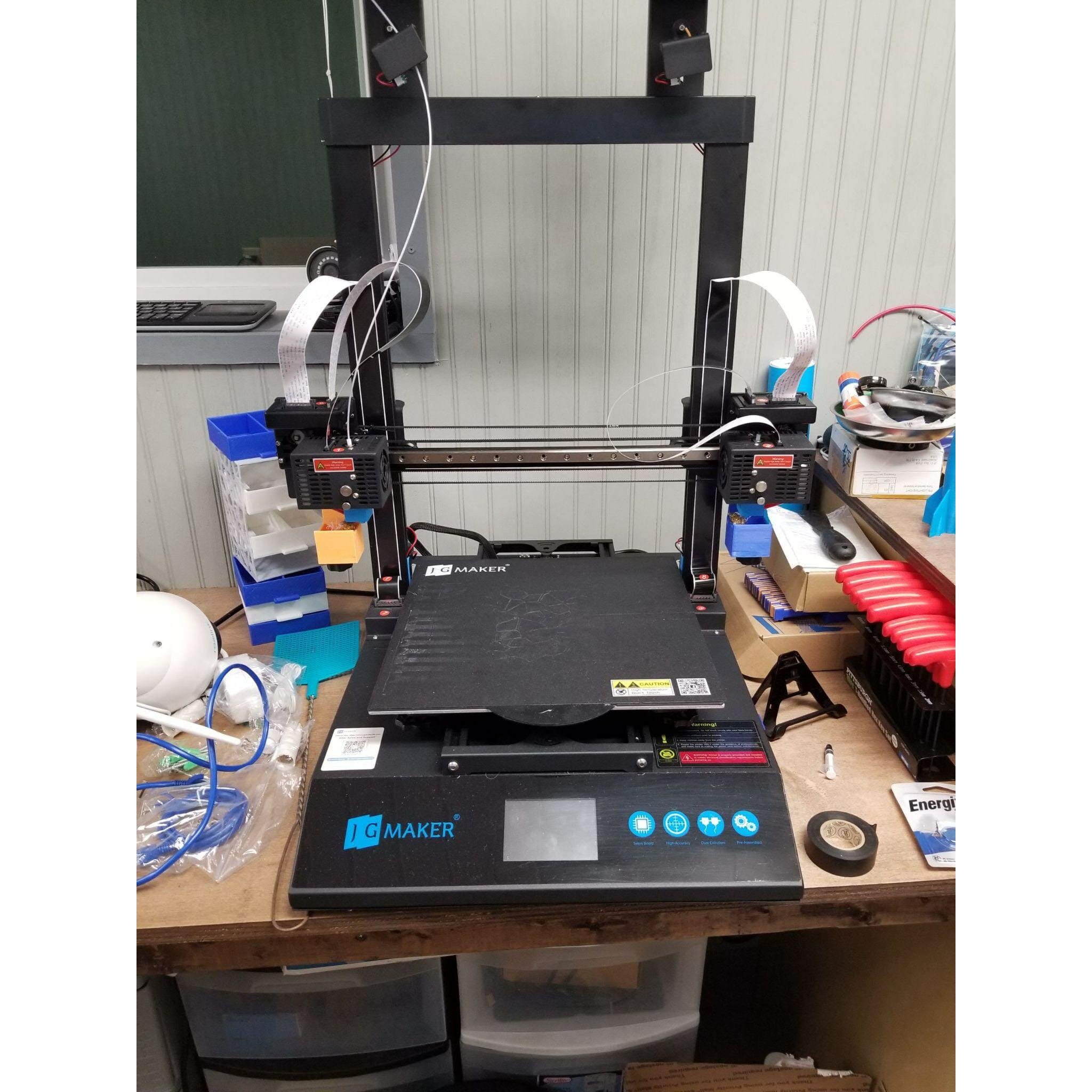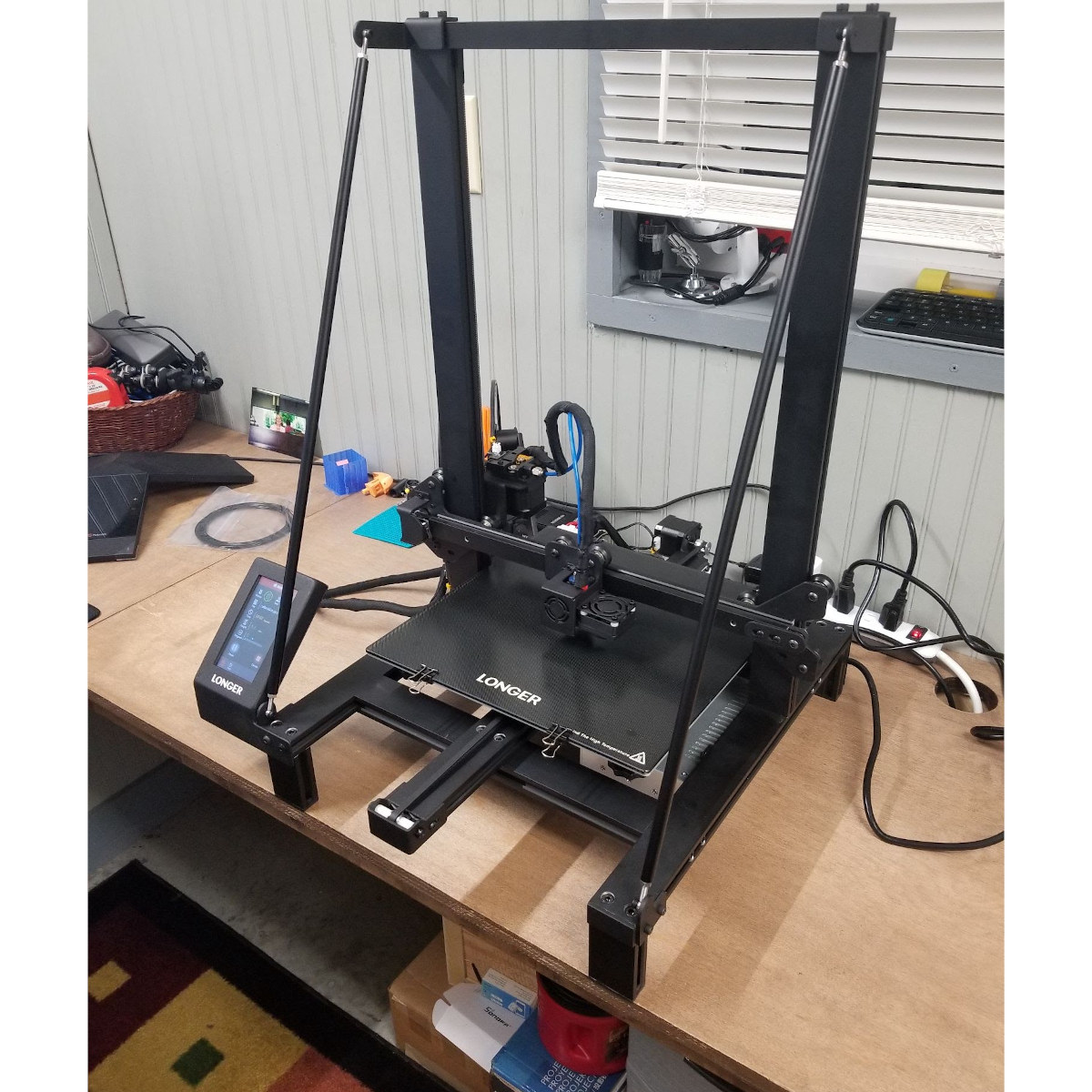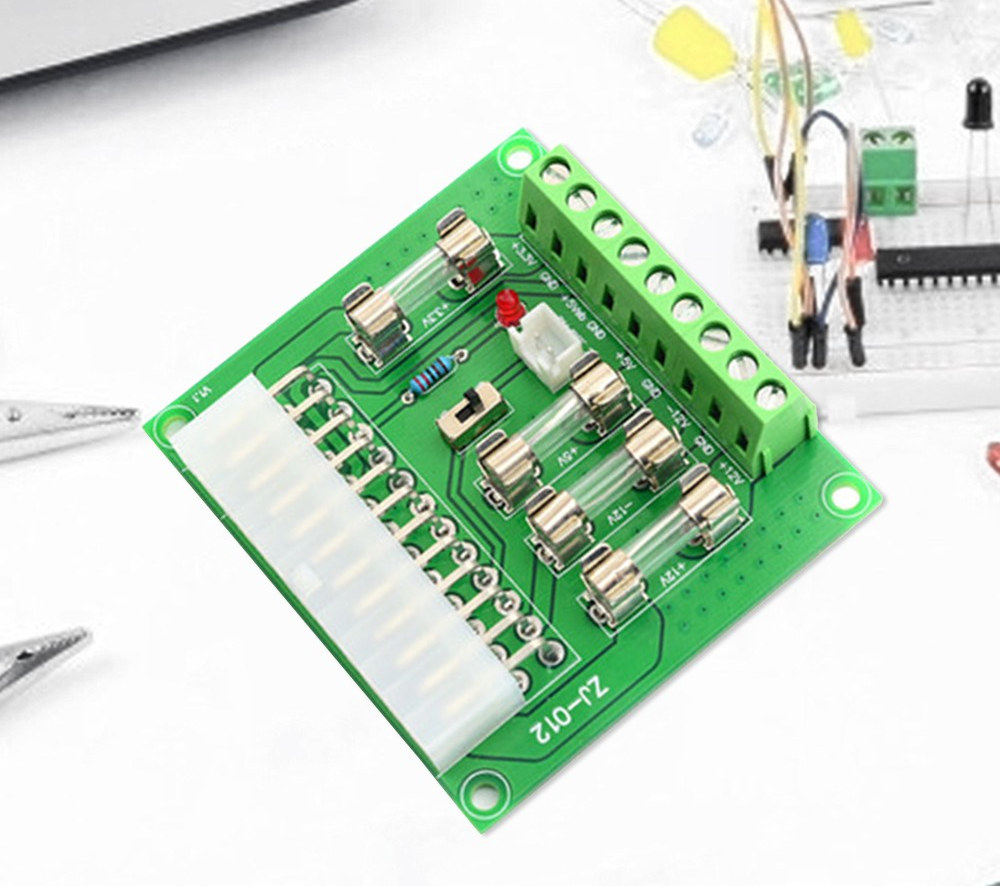We’ve previously covered 3D scanners from the low-cost DIY Ciclop kit to more expensive models ($1,000+), but the market offerings have improved as shown by Revopoint POP 2 3D scanner that not only scans shapes but also colors, and is currently offered on Kickstarter for $419 and up. Revopoint POP 2 scanner relies on stereo depth capture with micro-structured light using a “proprietary micro projecting chip” enabling up to 0.1mm accuracy, and the texture scanning mode can add color/texture to 3D models as well. Revopoint POP 2 technical specifications: Technology – Micro-structured light and binocular proprietary technology Single capture – Accuracy: up to 0.1mm, range/area: 210 x 130 mm Point distance – 0.15 mm Working distance – 150 to 400 mm Minimum scan volume – 20 x 20 x 20 mm Scan speed – Up to 10 fps Light source – Class 1 infrared laser (meaning eye safe) Alignment – […]
Octo4a app installs OctoPrint server on Android smartphones
Octoprint is a popular open-source 3D printer controller software that runs on Raspberry Pi boards, Orange Pi Lite SBC, Amlogic TV boxes, and other devices. But considering many people may already an older, perfectly working smartphones at home, FeelFree (Filip) decided to create the Octo4a project that install an Octoprint server on Android smartphones. It makes perfect sense since many smartphones come with a USB OTG interface that can connect to the 3D printer for control, while the touchscreen display is used for the user interface, and the camera to monitor your prints. SSH could be used to access the phone Octoprint server and change the settings manually. You can access the source code and APK files on Github. You’ll need to enable third-party apps in the settings before installing the app in order to install Octoprint on the phone. The only required permission is storage, except if you’d like […]
3D printer controller combines ESP32-S3 & Microchip SAME51 microcontrollers (Crowdfunding)
Here’s another ESP32 3D printer controller board with the Phi MainBoard 5LC powered by both an ESP32-S3-WROOM module and a Microchip SAME51 Cortex-M4F microcontroller, and providing Ethernet and WiFi connectivity. Designed by Likha Labs from the Philippines, Phi MainBoard 5LC is pre-loaded with RepRapFirmware firmware running the Duet Web Control interface that allows users to upload G-code files, configure settings, start jobs, control the device, and monitor prints. Besides 3D printers, the developers explain the board can also be used to drive other digital-fabrication equipment, such as CNC machines. Phi MainBoard 5LC 3D printer controller specifications: MCU Espressif Systems ESP32-S3 dual-core Xtensa LX7 WiFi and Bluetooth microcontroller @ 240 MHz with 512 KB SRAM, 8 MB SPI flash via ESP32-S3-WROOM-1-N8 module Microchip ATSAME51N19A Cortex-M4F microcontroller @ 120 MHz with 512 KB flash, 192KB SRAM Storage – MicroSD card socket Connectivity 10/100M Ethernet 802.11b/g/n 2.4 GHz Wi-Fi 4 Bluetooth 5.0 LE […]
Photon Mono X resin 3D printer review with Wash and Cure Plus Machine – Unboxing and First Prints
Hey, Karl here. Today we are going to unbox and take a look at Anycubic’s Photon Mono X resin 3D printer and Wash and Cure Plus machine. The Mono X is what I would consider a medium size resin 3D printer that boasts a 192x120x245 build volume. Mono is included in the name because they have changed to a mono screen. They say there are 2 advantages when using a mono screen. 1 the screen lasts longer compared to an RGB screen and 2 it allows more light through allowing for faster prints. I won’t go into much detail as I believe most people are aware of this 3D printing method. In summary, UV reactive resin is cured layer by layer until a model is printed. The typical layer height of .05mm vs a typical .2 layer height for FDM printing allows for high detail printing and the layers are […]
Goofoo Cube – A $99 easy-to-assemble 3D printer for beginners (Crowdfunding)
The Goofoo Cube is a $99 3D printer that aims to be as easy to assemble as a LEGO kit, and designed for beginners who can print directly from their phone from a library of over 1000 pieces. The compact 3D printer ships in a package barely larger than a shoebox, meaning it does not take much space on your desk but the build volume is rather small (80x80x80mm), supports PLA and PCL filaments, and can print small parts in about 30 minutes with a 0.7mm nozzle. Goofoo Cube specifications: Nozzle diameter – 0.7mm Building volume – 80 x 80 x 80 mm Print speed – 10 to 20 mm/s Non-heated printing bed Supported materials – PLA and PCL Host interface – USB or Mobile phone (WiFi) Power Supply – 24V/2A Dimensions – 255 x 255 x 208 mm Weight – 1.96kg The 3D printer is comprised of five parts […]
JGMaker Artist-D Pro Review – An IDEX 3D printer
Hey, Karl here for a new 3D printer review. Today we are going to look at the JGMaker Artist-D Pro. The Artist-D Pro is the successor to the non-pro version which debuted on Kickstarter and is an IDEX printer. IDEX is short for independent dual extruders and is a fancy way to say it has 2 complete hotend assemblies. From my perspective, the Artist-D was introduced with a lot of fanfare. I had several buddies back the original on Kickstarter and they seemed happy with it. But I didn’t see much value in it. I was thinking this was going to be just another printer that can print 2 different filaments. I have reviewed printers that had similar capabilities with one key difference being that they shared some common components. BUT…I quickly realized one aspect no one is talking about is speed during production runs. Unboxing, build, and calibration The […]
Longer LK5 Pro 3D printer review & speed printing
Hey, Karl here with a 3D printer review. We are going to be looking at the Longer LK5 Pro. I have known of the brand Longer for a little while, and when I think of Longer I associate the brand to resin 3D printers but today we are looking at one of their FDM offerings. Spoiler alert. The LK5 Pro is exceptionally ordinary. In late 2021 the state of hobby 3D printing seems to have plateaued. Most of the requirements that I want in a single machine are being met. The LK5 meets these basics. Easy build Silent drivers Nice print surface Touchscreen Out of box calibration Adequate motion system Rigid Frame Good Print quality With that said, nearly all new printers I see now look and perform similarly. Today my only real desire is to print faster and think speed can be one of the shorter-term goals I can […]
$5 board eases ATX power supply connection to single board computers
Many people have ATX power supplies from older desktop PCs that they may want to reuse with Arduino boards, Raspberry Pi, or other single board computers. It’s indeed possible to do so by trimming some cables and making a circuit to protect the board from over-voltage or over-current. But ZJ-012 adapter board offers a simpler solution with a 24-pin header for the ATX power supply, terminal blocks for connection to the target board, some fuses for protection, and a header to connect an on/off button. JZ-012 (also known as JZ-024) ATX power adapter board’s key features and specifications: Power Input – 20-pin or 24-pin computer ATX power supply Power output – 9-pin terminal block with +3.3V, +5V, -12V, +12V, +5V, GND with fuses for each power outputs On/Off control – Toggle switch or header for external button/switch (shorted for power on) Misc – Power indicator (red LED) Dimensions – 70 […]


